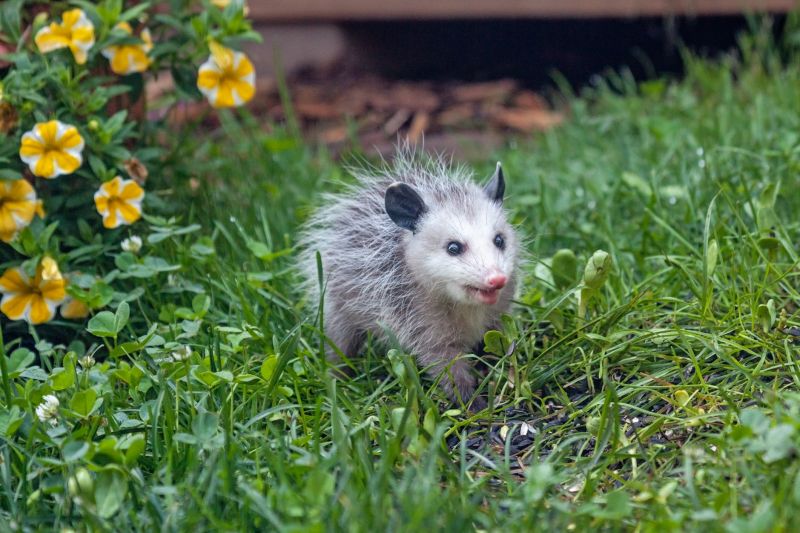Popular Opossum Removal Products For Safe and Humane Deterrence
Discover trusted devices and methods that ensure humane and effective removal of opossums from residential and commercial spaces.
 Dealing with opossums around your property requires a combination of humane removal methods and effective deterrents. A comprehensive approach often involves using a variety of products designed to safely and efficiently encourage opossums to leave and prevent future visits. These products can include live traps, repellents, barriers, and deterrent devices, each tailored to different situations and preferences. Proper identification of opossum activity, such as droppings, tracks, or noise, can help determine the most suitable products for removal and deterrence.
Dealing with opossums around your property requires a combination of humane removal methods and effective deterrents. A comprehensive approach often involves using a variety of products designed to safely and efficiently encourage opossums to leave and prevent future visits. These products can include live traps, repellents, barriers, and deterrent devices, each tailored to different situations and preferences. Proper identification of opossum activity, such as droppings, tracks, or noise, can help determine the most suitable products for removal and deterrence.
Top Overall Option
Humane Live Animal Trap
A versatile humane live trap provides a non-lethal way to capture opossums for safe relocation. Its design allows for easy setup and release, making it a preferred choice for those seeking effective and ethical removal. Proper placement and baiting are key to successful trapping, and regular monitoring ensures animals are not stressed or harmed during the process.
Types of Products For Opossum Removals
Live Animal Traps
Devices designed to safely capture opossums for relocation without harm, available in various sizes and configurations.
Ultrasonic Deterrents
Electronic devices emitting high-frequency sounds intended to repel opossums from specific areas.
Motion-Activated Lights
Bright lights triggered by movement that can discourage nocturnal animals from approaching.
Scent Repellents
Odor-based repellents that create an unappealing environment for opossums.
Physical Barriers
Mesh screens, fencing, and sealants used to block entry points and protect structures.
Noise Makers
Devices producing loud sounds or distress signals to deter animals from settling nearby.
Bait and Lure Stations
Specialized bait stations to attract opossums into traps or away from critical areas.
Repellent Sprays
Sprays formulated to discourage opossums from entering certain zones.
Electric Fencing
Low-voltage fencing designed to prevent animals from crossing into protected areas.
Under-Deck Barriers
Custom-fit barriers to seal off spaces beneath decks or porches where opossums may hide.
Attic Sealants
Specialized sealants to close off entry points into attics or crawl spaces.
Wildlife Exclusion Kits
Complete kits including multiple products to block, repel, and remove opossums from structures.
Popular Choices
Widely used for humane capture, these traps are a common choice for property owners managing opossum activity.
A popular device for discouraging nocturnal pests, including opossums, through high-frequency sound emissions.
A trending deterrent that combines lighting with motion detection to scare away animals.
Effective in certain situations, these repellents are favored for their ease of use.
Commonly used for sealing entry points and preventing re-entry into structures.
Devices producing distress sounds are increasingly popular for their non-chemical approach.
Effective for directing opossums into traps or away from specific areas.
A frequently chosen method for protecting gardens and yards from wildlife intrusion.
Highly recommended for preventing access to sheltered spaces under decks and porches.
Popular among homeowners seeking to secure attics from wildlife entry.
Convenient for spot treatments around problem areas.
A trending device for continuous, non-invasive wildlife management.
When selecting products for opossum removal, it is important to prioritize humane options that allow for safe relocation. Live traps are a common choice, providing a way to capture and release animals away from your property without causing harm. In addition, deterrent devices such as ultrasonic sound emitters or motion-activated lights can discourage opossums from returning. Sealants and barriers are also valuable for blocking entry points, especially in attics, crawl spaces, or under decks. Combining these tools with consistent monitoring can help manage opossum activity effectively.
Understanding the habits and preferred habitats of opossums can guide the selection of products. They are primarily nocturnal and often seek shelter in dark, secluded areas. Using scent-based repellents or visual deterrents can be particularly effective in these locations. It is essential to follow all safety instructions and local regulations when handling wildlife or using removal products. Regular inspection and maintenance of barriers and deterrents can ensure ongoing protection, making your property less attractive to these curious creatures.
Key Buying Considerations
- Humane treatment and safety for both animals and humans.
- Appropriate size and capacity of traps for opossums.
- Ease of use and setup of deterrent devices.
- Effectiveness of repellents based on the specific environment.
- Durability and weather resistance of outdoor barriers.
- Ability to monitor traps easily and access for release.
- Local regulations regarding wildlife removal and relocation.
- Compatibility of products with existing structures or spaces.
- Maintenance requirements and longevity of deterrent devices.
- Portability if you need to move products between locations.
- Cost-effectiveness relative to the size and scope of the problem.
- Availability of replacement parts or refills for repellents or deterrents.
- Customer reviews and feedback on product effectiveness.
- Compatibility with other pest control or wildlife management methods.
- Environmental safety and non-toxicity of repellents and sprays.
